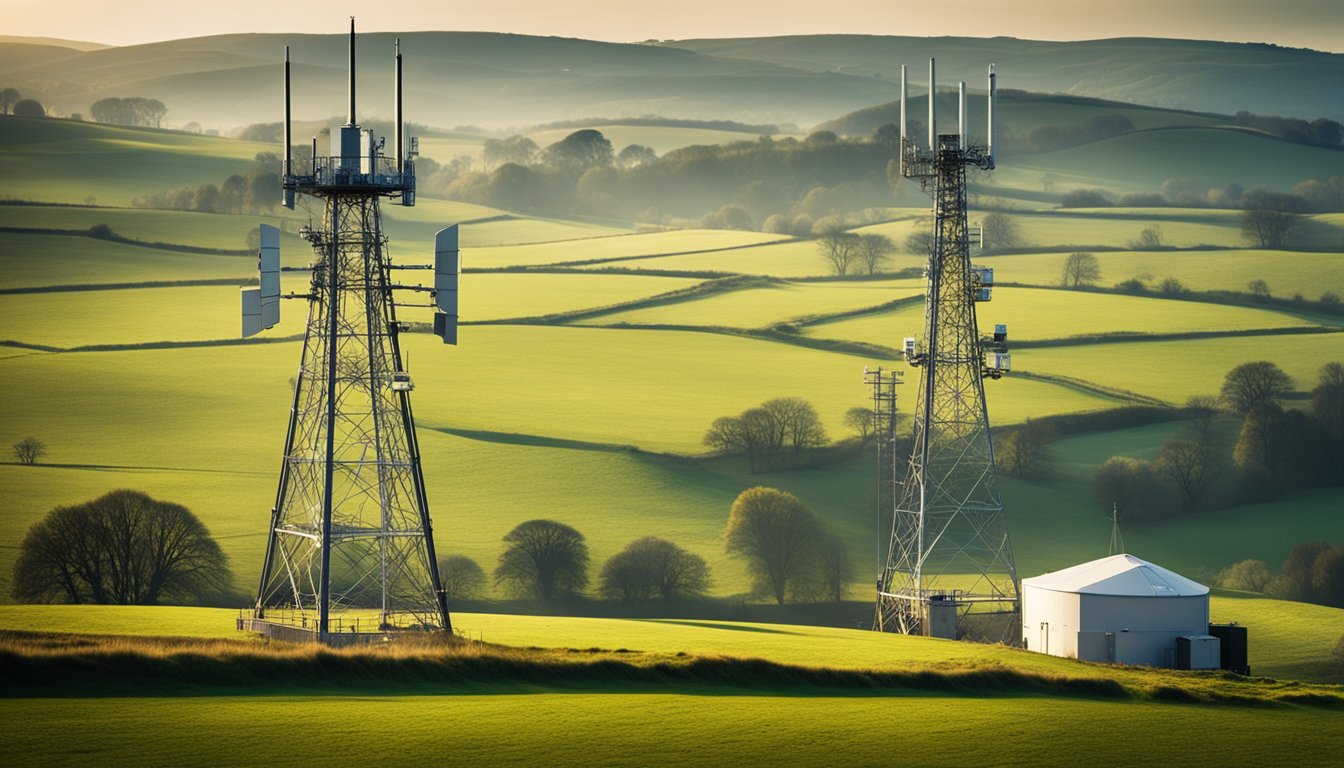Late updated: 25 Jul 2024 14:07
Written by: Oliver Bennett
Next-Gen Wireless Solutions For Rural UK Internet: Bridging the Digital Divide
In recent years, rural broadband connectivity in the UK has experienced significant advancements, transforming the way internet services are delivered to remote areas. Next-gen wireless solutions are providing robust and reliable internet connectivity to regions previously deemed hard-to-reach. This article explores the cutting-edge technologies revolutionising rural internet access and the providers leading this charge.

From innovative wireless networks to full fibre connections, the options available for rural broadband are now more diverse and effective. Providers like Airband are offering fixed-line full fibre and fixed wireless broadband, catering to the unique needs of rural households and businesses. Advanced wireless technologies, including 5G, LoRa WAN, and satellite services, are also playing a pivotal role in bridging the connectivity gap.
We will delve into the key players and technologies driving this change, along with the challenges faced and the growth potential in the rural broadband sector. By understanding these dynamics, we can better appreciate the efforts to bring high-speed internet to every corner of the UK.
Key Takeaways
- Next-gen wireless solutions are enhancing rural broadband in the UK.
- Providers offer diverse technologies, including 5G and satellite, to improve connectivity.
- Addressing challenges boosts growth in the rural broadband sector.
Core Technologies and Providers

In recent years, significant advancements in core technologies have sought to bridge the digital divide in rural UK areas. Key providers are at the forefront of leveraging these technologies to enhance connectivity, coverage, and broadband services.
Understanding Broadband Technologies
Multiple technologies are addressing rural broadband needs. Fibre broadband, especially full-fibre, offers high-speed connectivity by delivering fibre optic cables directly to homes.
Satellite broadband, while slower compared to fibre, serves remote locations where traditional infrastructure is lacking. Companies like OneWeb and Starlink have advanced satellite technologies, enhancing download speeds and reliability.
Fixed wireless and mobile broadband (4G and 5G) provide flexibility. These services, offered by EE and Vodafone, employ radio signals translating to quicker setups and broader reach.
Additionally, community initiatives using wireless broadband highlight how rural communities can push for better local solutions, promoting collaboration and self-reliance.
Key Providers and Innovators
In the UK, various providers lead the charge in deploying these innovative technologies. BT's Openreach dominates with widespread fibre broadband installation, focusing on broad coverage.
Gigaclear targets rural communities with full-fibre solutions, ensuring high-speed internet in less accessible areas. Meanwhile, Virgin Media combines both fibre and wireless solutions to improve urban-rural connectivity transitions.
Smaller providers like B4RN (Broadband for the Rural North) and Airband cater specifically to rural regions, leveraging community efforts and fixed wireless technologies to deliver essential services.
Truespeed is notable for its aggressive fibre rollout in underserved areas, ensuring robust broadband solutions tailored for rural needs.
These providers and their innovations play crucial roles in shaping the future of rural broadband in the UK.
Challenges and Growth in the Rural Broadband Sector
Next-Gen wireless solutions offer a promising path to enhancing rural UK broadband. Yet, addressing connectivity in remote locations and navigating economic and policy considerations present distinct challenges and opportunities.
Addressing Connectivity in Remote Locations
Isolated properties and rural communities in England often experience slow broadband speeds. Full fibre broadband and gigabit-capable broadband solutions are seen as essential for meeting the needs of these areas. While fibre to the premises (FTTP) is an ideal solution for improving broadband quality, its rollout in remote locations is challenging due to geographical constraints.
Many isolated properties require unique approaches like community broadband initiatives. These involve residents collaborating to pool resources or apply for grants, thus reducing individual costs. Additionally, wireless technology is pivotal, particularly where traditional infrastructure is hard to implement. These technologies can bridge the connectivity gap, supporting activities like working from home, essential for modern rural living.
Economic and Policy Considerations
The UK government has significantly increased grants and subsidies aimed at improving rural broadband. These financial aids help mitigate the high costs associated with deploying full fibre broadband and FTTP in less populated areas. Furthermore, government initiatives often include favourable broadband deals for rural residents to make high-speed internet more accessible.
Our economy stands to gain from enhanced rural connectivity—boosting local businesses and allowing remote working, which is critical for economic growth. Nevertheless, understanding and navigating these policies can be complex. Thus, collaboration between local governments, telecommunications providers, and rural community leaders is critical to effectively implement and manage these broadband initiatives. This synergy ensures that technology deployment aligns well with regulatory frameworks and economic goals.
Frequently Asked Questions

In this section, we explore key updates and solutions for next-generation wireless internet in rural UK. From technological advancements to government initiatives, discover how connectivity is improving in these areas.
What advancements are being made in wireless technology to improve internet access in rural UK?
Recent advancements, such as 5G technology and improved fixed wireless access (FWA), are significantly enhancing internet speeds and reliability in rural areas. The deployment of low-earth orbit (LEO) satellites is also helping to close the connectivity gap.
How can one obtain internet connectivity in remote UK regions where traditional broadband is unavailable?
For regions where traditional broadband is not an option, satellite broadband and mobile networks (4G and 5G) are viable alternatives. Providers like Airband and Ruralband offer tailored services for these areas, ensuring wider connectivity.
What are the benefits of next-generation access broadband for rural communities?
Next-generation access broadband brings faster internet speeds and more stable connections. This supports remote working, online education, and access to digital services, thereby boosting local economies and improving quality of life.
Which wireless technologies are currently the most effective for providing rural UK internet connections?
Fixed wireless access (FWA) and mobile broadband (4G and 5G) are highly effective for rural internet connectivity. Satellite broadband is also emerging as a strong contender for remote areas.
What strategies are the UK government implementing to enhance wireless infrastructure in rural areas?
The UK government is investing in projects aimed at improving rural internet access. Initiatives like Project Gigabit focus on delivering gigabit-capable broadband, while the Shared Rural Network seeks to enhance mobile coverage in rural and remote regions.
What are the leading solutions for mobile internet coverage in not-spot regions of the UK?
To combat not-spots, or areas with no mobile coverage, providers are using multi-network solutions and expanding the reach of 4G and 5G networks. LEO satellites also play a crucial role in providing coverage to the most inaccessible areas.
